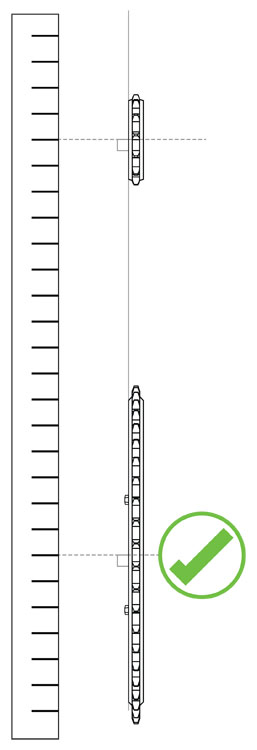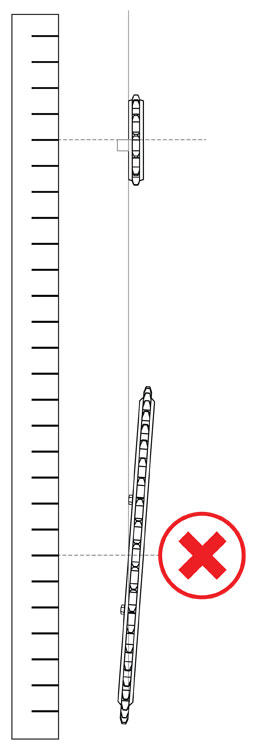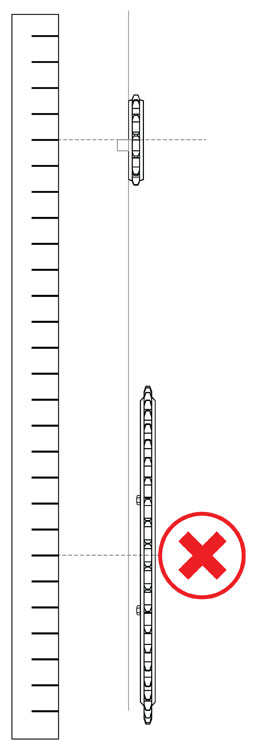Chain and Chainwheel
When fitting new chainwheels it is very important that a new chain is fitted at the same time, and vice versa. Using an old chain with new sprockets, or a new chain with old sprockets will cause rapid wear.
It is important if you are installing the chainwheels yourself to have the factory service manual specific to your model. Renthal chainwheels are made to be a direct replacement for your OEM chainwheels and as such, the installation should be performed according to your models service manual.
When fitting an O-ring chain to a motorcycle that was fitted with a non O-ring chain as original equipment, it is essential to check that there is proper clearance of the engine cases near the countershaft sprocket and any other places of close contact. If the chain does come into contact with any metallic surface, you should remove the chain immediately and install a narrower non O-ring chain. Failure to do so could result in damage to the chain and motorcycle and could ultimately cause the chain to fail.
During use a chain will stretch (i.e. the pins will wear causing extension of the chain). To measure how much a chain has stretched, put the motorcycle in gear and rotate the rear wheel to tension the top strand of the chain. Measure accurately (ideally with a vernier) 16 links, counting both roller and pin links. If the length of the measured 16 links is greater than the maximum acceptable length given in the table below then the chain should no longer be used. These figures assume a 2% maximum allowable extension for non 'O'-ring chain and a 1% maximum extension for 'O'-ring chain.
Maximum Acceptable Lengths - 520 chains
Original Chain Pitch - 5/8" / 15.875mm
Non 'O'-ring chain - 10.2" / 259.0mm
'O'-ring chain - 10.1" / 256.5mm
Using a chain which has been stretched more than the above maximum allowance causes the chain to ride up the teeth of the sprocket. This causes damage to the tips of the chainwheels teeth, as the force transmitted by the chain is transmitted entirely through the top of the tooth, rather than the whole tooth. This results in severe wearing of the chainwheel.
Misalignment of front and rear sprocket is a major cause of rapid wear. Chains and sprockets should be checked for worn spots which could indicate misalignment. Misalignment is usually due to not adjusting the chain tensioners an equal amount on both sides, worn wheel bearings or worn swinging arm bushings. To check the alignment put the bike on a stand, spin the rear wheel and watch how the chain travels along the sprockets. The chain should run on the centre of the teeth, it should not run to one side or snake from one side to the other.
These diagrams show two examples of misalignment which must be avoided. A long rule should be used to avoid these whist setting up. The front sprocket must be aligned within 1 mm (0.04") of the straight edge.



Lack of lubrication is a common cause of chain and sprocket wear. Check your chain is well lubricated. Neglecting a chain will cause it to rust.
Your chain snapping can cause expensive damage to your bike. If your chain is damaged, worn or overstretched, replace it now. Renthal chain and chainwheels are a perfectly matched, hard wearing, high quality replacement for you existing final drive. Checklist - when fitting new chain and chainwheels ensure that:-
- You do not mix old and new chain and chainwheels.
- The chainwheels are correctly aligned.
- The chain and chainwheels are well lubricated
For more Info check out the following pages
Intro to Gearing | Gearing Explained | Gearing Ratios